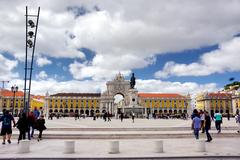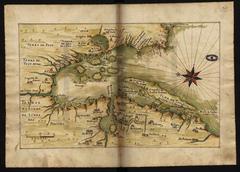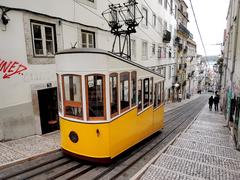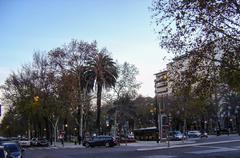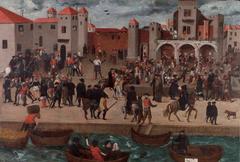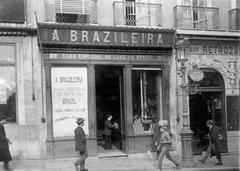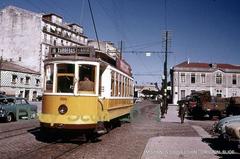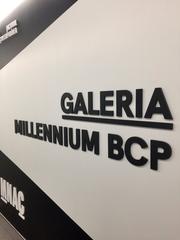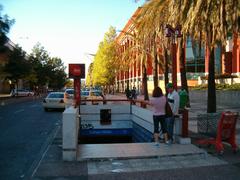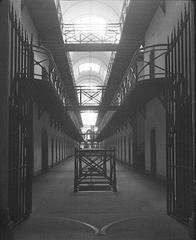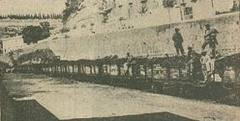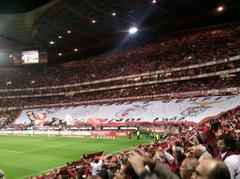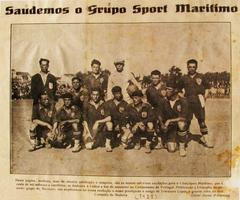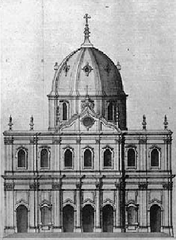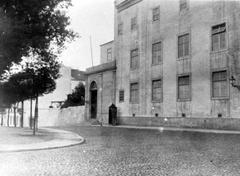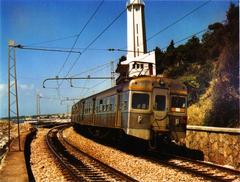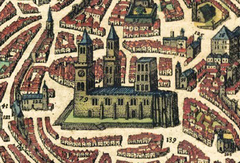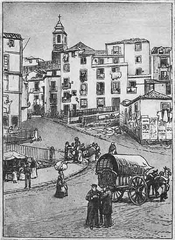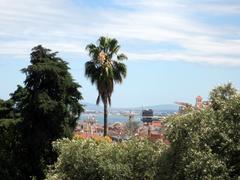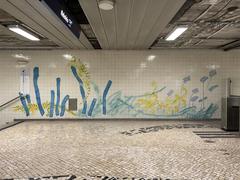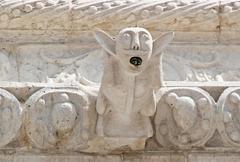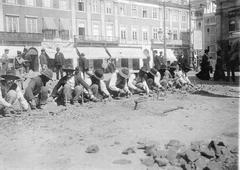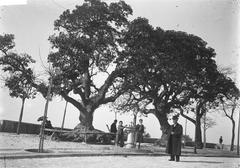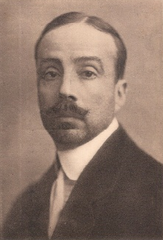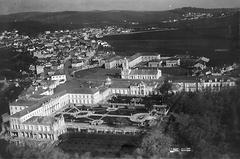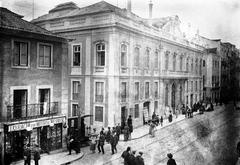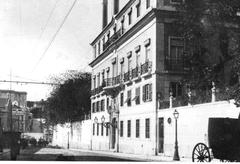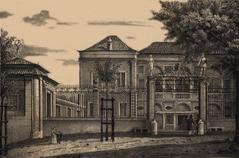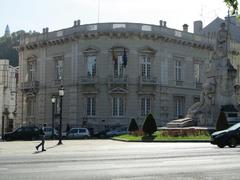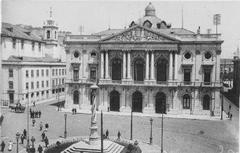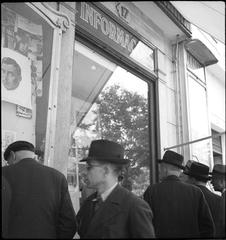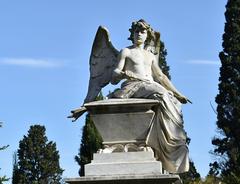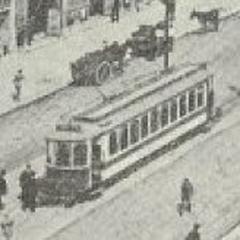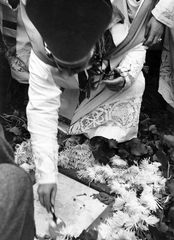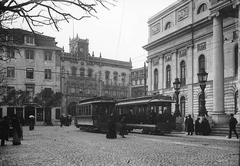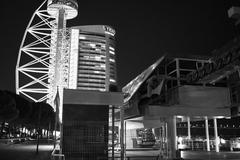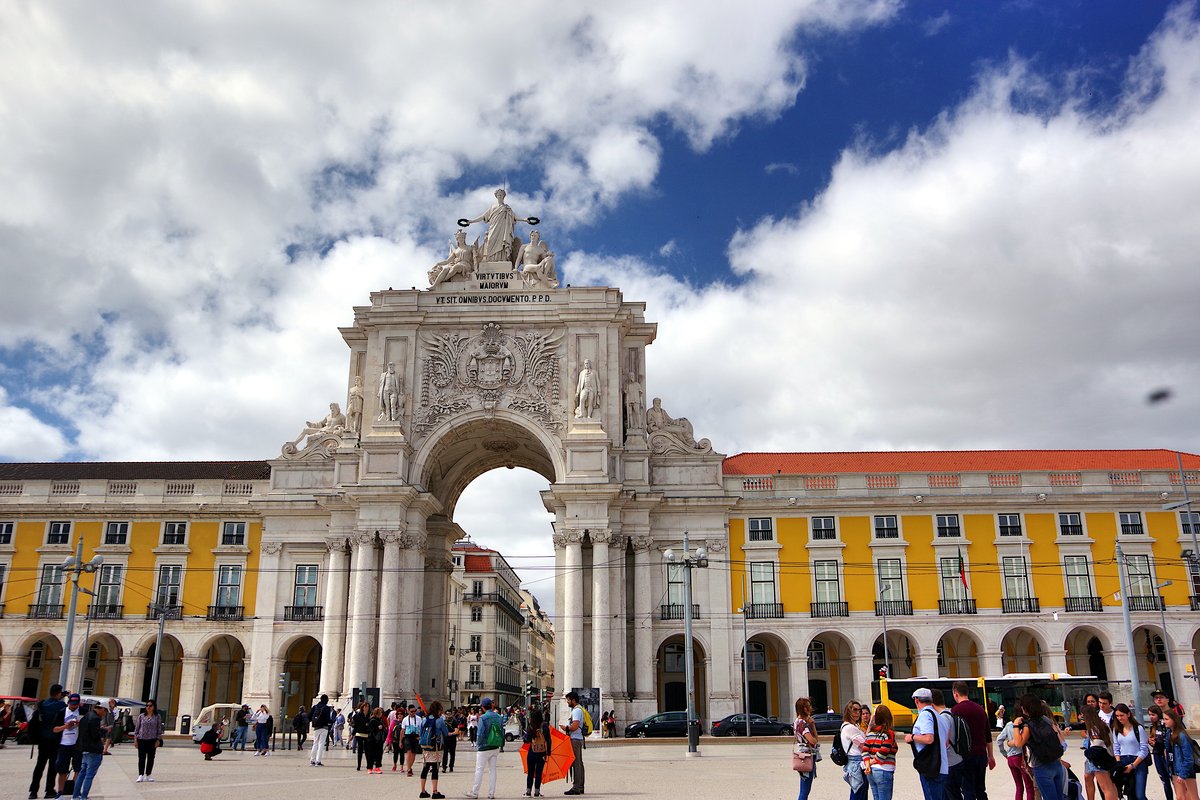
Comprehensive Guide to Visiting Praça do Comércio in Lisbon
Date: 16/07/2024
Introduction
Praça do Comércio, known locally as Terreiro do Paço, stands as a testament to Lisbon’s resilience and rich history. This iconic square, facing the Tagus River, is not only a hub of social and political activity but also a symbol of architectural innovation and cultural vibrancy. The site’s origins trace back to the 16th century when it housed the Royal Ribeira Palace, a residence for Portuguese monarchs. However, the devastating 1755 Lisbon earthquake decimated the palace and much of the city, necessitating a comprehensive reconstruction led by the visionary Marquis of Pombal (Lisbon Earthquake).
In the aftermath, Praça do Comércio was redesigned as a grand, open space that symbolized Lisbon’s rebirth. The architectural style, known as Pombaline, emphasized functionality, modernity, and earthquake-resistant construction techniques. Key features include symmetrical buildings with arcades, the central equestrian statue of King José I, and the Arco da Rua Augusta, a triumphal arch that serves as a gateway to Lisbon’s Baixa district (Marquis of Pombal).
Today, Praça do Comércio is a bustling center of activity, offering visitors a blend of historical insights, cultural events, and modern amenities. From guided tours and museums to picturesque views and vibrant festivals, the square remains a must-visit destination for anyone exploring Lisbon. This guide aims to provide comprehensive information on visiting hours, ticket prices, historical background, and practical tips to enhance your experience at this remarkable landmark.
Table of Contents
- [Exploring Praça do Comércio - Visiting Hours, Tickets, and Historical Insights](#exploring-praça-do-comércio---visiting-hours-tickets-and-historical-insightsexploring-praça-do-comércio---visiting-hours-tickets-and-historical-insights)
- [Introduction](#introductionintroduction)
- [Origins and Early Development](#origins-and-early-developmentorigins-and-early-development)
- [Post-Earthquake Reconstruction](#post-earthquake-reconstructionpost-earthquake-reconstruction)
- [Architectural Significance](#architectural-significancearchitectural-significance)
- [Visiting Hours and Tickets](#visiting-hours-and-ticketsvisiting-hours-and-tickets)
- [Guided Tours](#guided-toursguided-tours)
- [Accessibility](#accessibilityaccessibility)
- [Nearby Attractions](#nearby-attractionsnearby-attractions)
- [Political and Social Hub](#political-and-social-hubpolitical-and-social-hub)
- [Modern Developments](#modern-developmentsmodern-developments)
- [Photographic Spots](#photographic-spotsphotographic-spots)
- [Cultural and Economic Impact](#cultural-and-economic-impactcultural-and-economic-impact)
- [Preservation and Heritage](#preservation-and-heritagepreservation-and-heritage)
- [Visitor Experience](#visitor-experiencevisitor-experience)
- [FAQ](#faqfaq)
- [Conclusion and Call to Action](#conclusion-and-call-to-actionconclusion-and-call-to-action)
Exploring Praça do Comércio - Visiting Hours, Tickets, and Historical Insights
Introduction
Praça do Comércio, also known as Terreiro do Paço, is one of the most iconic squares in Lisbon, Portugal. This historical landmark offers a unique blend of rich history, stunning architecture, and vibrant cultural activities, making it a must-visit destination for anyone exploring the Portuguese capital. In this guide, you’ll find everything you need to know about visiting Praça do Comércio, including visiting hours, ticket information, and historical insights.
Origins and Early Development
Praça do Comércio’s history dates back to the 16th century when it served as the site of the Royal Ribeira Palace. The palace was a significant royal residence until it was destroyed by the devastating earthquake of 1755. This natural disaster, followed by a tsunami and fires, led to the near-total destruction of Lisbon, necessitating a comprehensive reconstruction of the city (Lisbon Earthquake).
Post-Earthquake Reconstruction
The reconstruction of Lisbon, including Praça do Comércio, was spearheaded by the Marquis of Pombal, Sebastião José de Carvalho e Melo. He implemented a visionary urban planning strategy that emphasized modernity, safety, and functionality. The square was redesigned as a grand, open space facing the Tagus River, symbolizing the city’s rebirth and resilience. The new design featured symmetrical buildings with arcades, a central equestrian statue of King José I, and the Arco da Rua Augusta, a triumphal arch that serves as a gateway to the Baixa district (Marquis of Pombal).
Architectural Significance
The architectural style of Praça do Comércio is predominantly Pombaline, named after the Marquis of Pombal. This style is characterized by its rational, grid-like street layout, uniform building facades, and innovative construction techniques designed to withstand future earthquakes. The buildings surrounding the square are notable for their elegant arcades, which provide sheltered walkways and house various shops, cafes, and government offices. The central equestrian statue of King José I, created by sculptor Joaquim Machado de Castro, was inaugurated in 1775 and remains a focal point of the square (Pombaline Architecture).
Visiting Hours and Tickets
Praça do Comércio is an open public space accessible 24/7. However, if you’re interested in visiting the surrounding attractions such as the Lisboa Story Centre or the Arco da Rua Augusta, it’s important to check their specific visiting hours and ticket prices. The Lisboa Story Centre is open from 10 AM to 8 PM, with tickets priced at €7 for adults. The Arco da Rua Augusta is open from 9 AM to 7 PM, and tickets cost €3 for adults (Lisboa Story Centre).
Guided Tours
For a more immersive experience, consider joining a guided tour. Various tour operators offer historical walking tours that include Praça do Comércio and other significant landmarks in Lisbon. These tours provide valuable insights into the square’s history, architecture, and cultural significance.
Accessibility
Praça do Comércio is highly accessible, with wide, flat walkways suitable for wheelchairs and strollers. The square is well-connected to major transportation hubs, including the Cais do Sodré railway station and the Terreiro do Paço metro station (Cais do Sodré).
Nearby Attractions
Praça do Comércio’s strategic location along the Tagus River makes it a gateway to Lisbon’s historic districts, including Alfama, Baixa, and Chiado. Nearby attractions include the Lisbon Cathedral, the Fado Museum, and the Santa Justa Lift, all within walking distance.
Political and Social Hub
Throughout its history, Praça do Comércio has been a central hub for political and social activities in Lisbon. It has hosted numerous significant events, including royal ceremonies, military parades, and public celebrations. The square has also been the site of political upheavals, such as the assassination of King Carlos I and his heir, Prince Luís Filipe, in 1908. This event, known as the Lisbon Regicide, marked a turning point in Portuguese history, leading to the establishment of the Portuguese Republic in 1910 (Lisbon Regicide).
Modern Developments
In recent years, Praça do Comércio has undergone several renovations to enhance its appeal as a tourist destination and cultural landmark. The square has been pedestrianized, making it more accessible and enjoyable for visitors. The surrounding buildings have been restored, and new attractions, such as the Lisboa Story Centre, have been introduced to provide visitors with an immersive experience of Lisbon’s history. The square also hosts various cultural events, including concerts, festivals, and public art installations, making it a vibrant and dynamic space (Lisboa Story Centre).
Photographic Spots
Praça do Comércio offers several excellent photographic spots. Capture the grandeur of the Arco da Rua Augusta, the elegance of the equestrian statue of King José I, and the stunning views of the Tagus River and the 25 de Abril Bridge from the square.
Cultural and Economic Impact
Praça do Comércio continues to play a vital role in Lisbon’s cultural and economic life. It is a popular destination for both locals and tourists, offering a range of activities and attractions. The square’s strategic location along the Tagus River makes it a gateway to the city’s historic districts. Its proximity to major transportation hubs further enhances its accessibility.
Preservation and Heritage
Efforts to preserve and promote the historical and cultural heritage of Praça do Comércio are ongoing. The square is part of Lisbon’s Baixa Pombalina, which has been proposed for inclusion in the UNESCO World Heritage list. This recognition would underscore the significance of the square and its surrounding area as a testament to Lisbon’s resilience and architectural innovation following the 1755 earthquake (UNESCO World Heritage).
Visitor Experience
For visitors, Praça do Comércio offers a unique blend of history, culture, and modern amenities. The square’s open space provides stunning views of the Tagus River and the 25 de Abril Bridge. Visitors can explore the Arco da Rua Augusta, which offers panoramic views of the city from its terrace. The square is also home to several museums, including the Lisboa Story Centre and the Museum of Beer, which offer insights into Lisbon’s rich history and cultural heritage (Museum of Beer).
FAQ
What are the opening hours of Praça do Comércio?
Praça do Comércio is an open public space accessible 24/7. However, specific attractions like the Lisboa Story Centre and the Arco da Rua Augusta have their own visiting hours.
How do I get tickets for Praça do Comércio?
Tickets for attractions like the Lisboa Story Centre and the Arco da Rua Augusta can be purchased on-site or online through their respective websites.
Is Praça do Comércio accessible?
Yes, the square has wide, flat walkways suitable for wheelchairs and strollers and is well-connected to major transportation hubs.
Are there guided tours available?
Yes, various tour operators offer historical walking tours that include Praça do Comércio.
Conclusion and Call to Action
In summary, Praça do Comércio is not only a historical landmark but also a vibrant cultural and social hub that continues to shape the identity of Lisbon. Its rich history, architectural significance, and ongoing developments make it a must-visit destination. Download the Audiala app for more travel tips, check out our related posts, and follow us on social media for the latest updates on Lisbon’s attractions.
References
- Lisbon Earthquake, 1755, Britannica source url
- Marquis of Pombal, Britannica source url
- Lisboa Story Centre source url
- Pombaline Architecture source url
- Cais do Sodré source url
- Lisbon Regicide source url
- UNESCO World Heritage source url
- Museum of Beer source url

